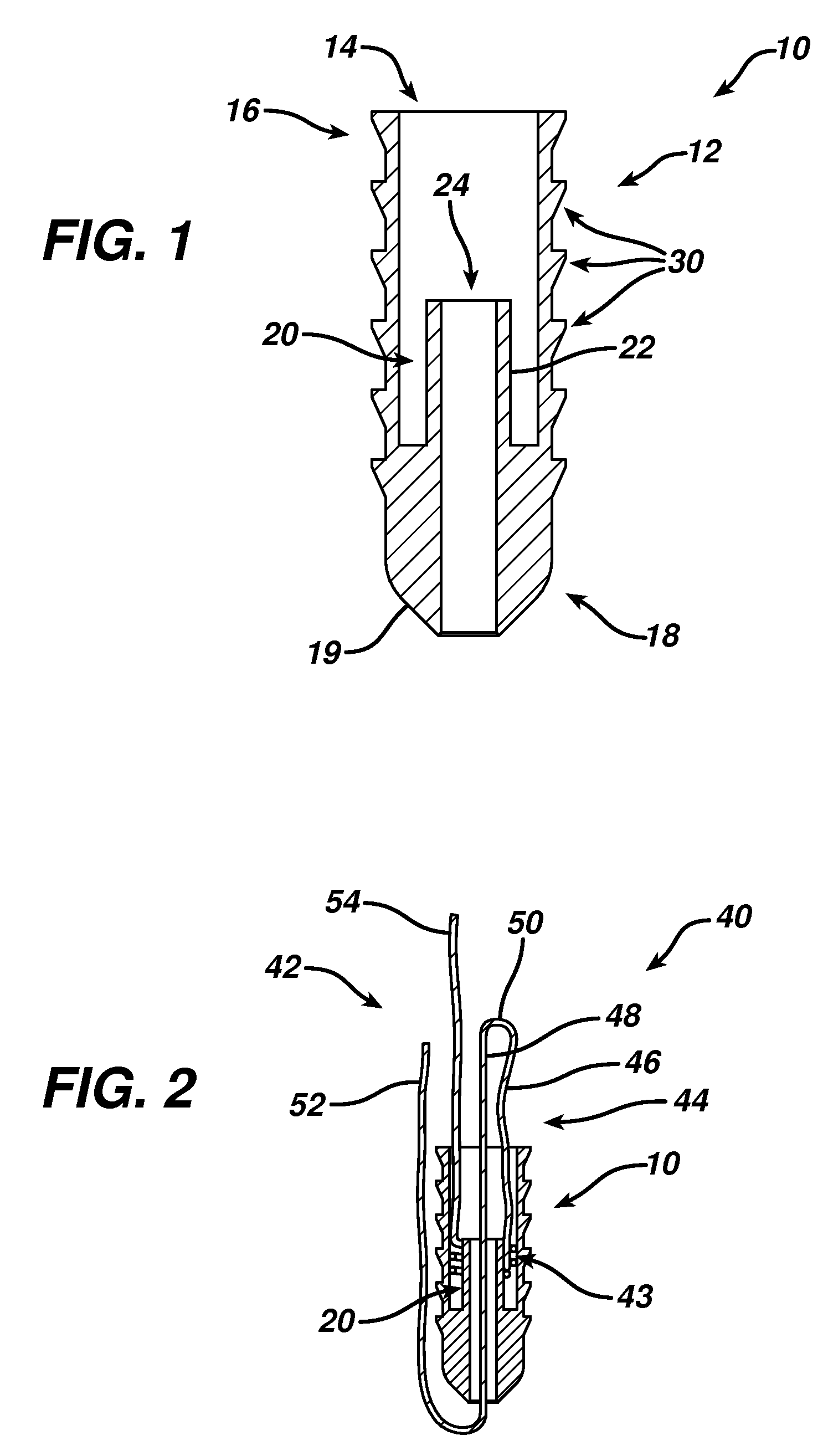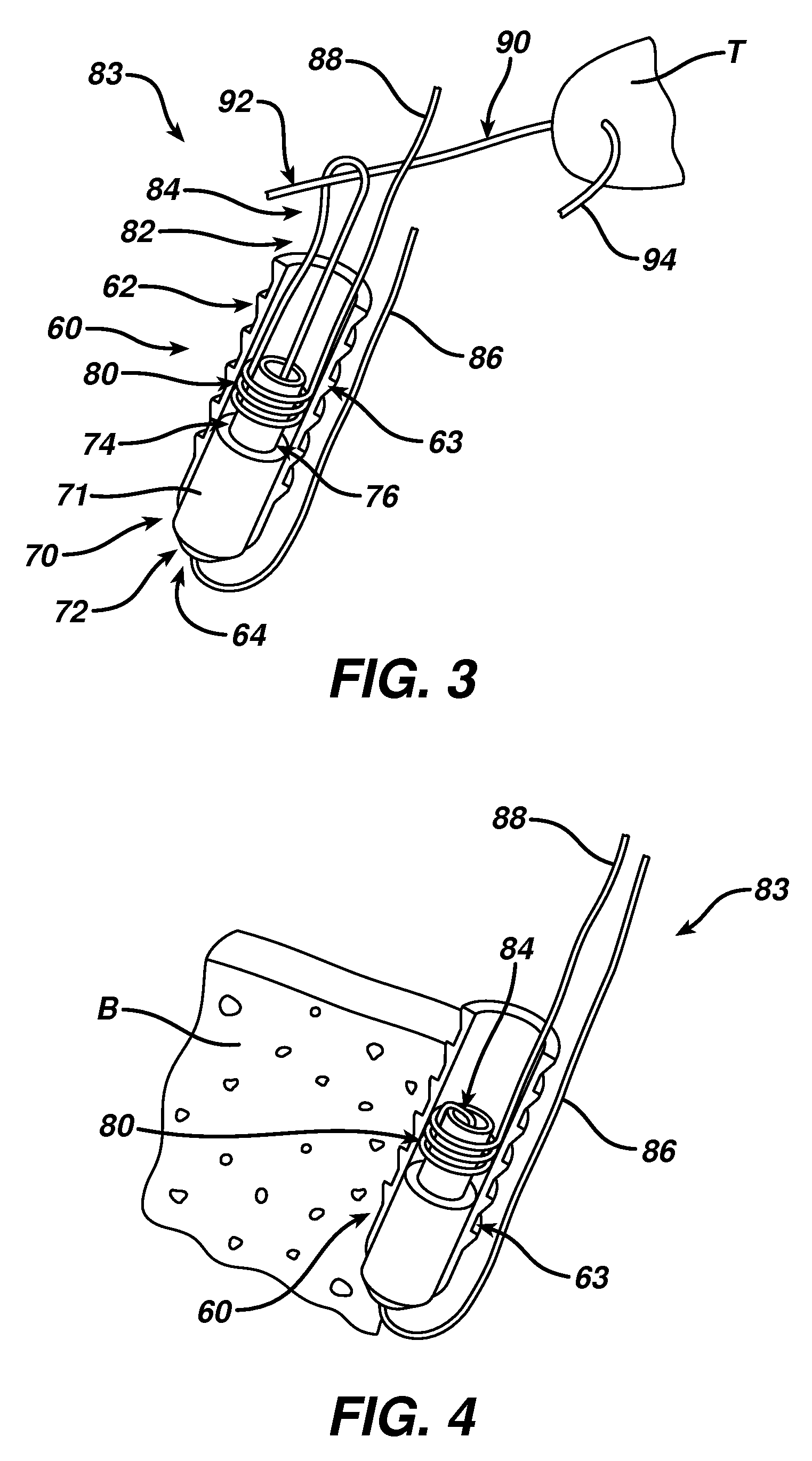Surgical filament assemblies
a technology of filament assemblies and anchors, applied in the field of anchors and filament assemblies, can solve the problems of sliding knots slipping, loops enlarge, and additional knots, and achieve the effect of reducing the number of half-hitches or other knots
- Summary
- Abstract
- Description
- Claims
- Application Information
AI Technical Summary
Benefits of technology
Problems solved by technology
Method used
Image
Examples
Embodiment Construction
[0040]This invention may be accomplished by a suture anchor, and a surgical filament assembly using same, capable of being fixated in a hole formed in a bone of a patient. The suture anchor preferably includes an anchor body having a distal end, a proximal end, a passage extending from the proximal end toward the distal end, at least one feature disposed on the exterior of the anchor to engage bone, and a filament knot patency element disposed within the passage, that is, disposed internally within the anchor body. The filament knot patency element defines a channel having a sufficient minimum cross-sectional area to allow movement of a portion of a surgical filament therethrough when a removable sliding knot is formed, using the surgical filament, about the filament knot patency element.
[0041]The surgical filament assembly preferably includes a first filament such as a suture having a sliding knot removably positioned about the knot patency element, with a shortening limb and a tig...
PUM
 Login to View More
Login to View More Abstract
Description
Claims
Application Information
 Login to View More
Login to View More - R&D
- Intellectual Property
- Life Sciences
- Materials
- Tech Scout
- Unparalleled Data Quality
- Higher Quality Content
- 60% Fewer Hallucinations
Browse by: Latest US Patents, China's latest patents, Technical Efficacy Thesaurus, Application Domain, Technology Topic, Popular Technical Reports.
© 2025 PatSnap. All rights reserved.Legal|Privacy policy|Modern Slavery Act Transparency Statement|Sitemap|About US| Contact US: help@patsnap.com



